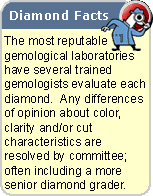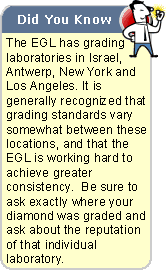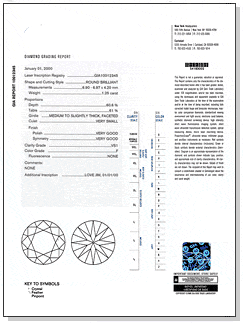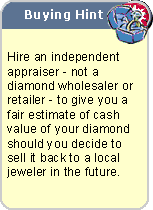

|
Definition:
A diamond certificate describes the specific characteristics of
the diamond, including dimensions, carat weight, clarity and color,
plus a variety of measurements and/or grades related to cut. |
|
Which
diamonds have certificates?
Though gemological laboratories will grade any diamond, typically only diamonds of greater carat weight (over 0.50 carat) and higher color, clarity, cut grades are submitted. |
 |


